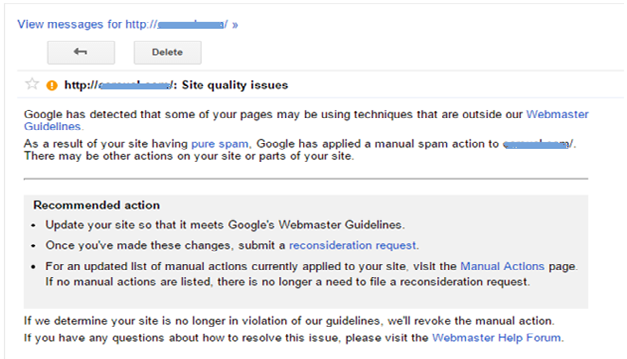The site had been making an average of $81.33 a day. Today, it made $2.28.
I woke up on the morning of October 8, 2014 and nothing was out of the ordinary. I brushed my teeth, threw on some dirty socks and lathered my head with a pound of hair gel. I entered my car and prepared myself for the cherished, extraordinarily relaxing and incredibly serene drive I take every single morning.
While sipping on my coffee, I checked my Adsense accounts. That’s when it hit me: the Google algorithm change that everybody was fuming about had hit my site. The site in question had been making an average of $81.33 a day or $29,648.95 a year. Today, it made $2.28. No, I didn’t spit out my coffee nor did I bawl my eyes out (OK, maybe just a little), because I actually expected something like this to happen.
Thin is not in
According to searchengineland.com, Panda 4.1 is “a filter designed to penalize ‘thin’ or poor content from ranking well.” And there’s no question that the content on the site in question was bad. Unreadable is an understatement. Illegible would be far too kind. Frankly, the site in question is the purest form of garbage – and that’s being nice.
If you took a quick look at Didit’s Panda 4.1 Survival Checklist, the site in question gets a “yes” for almost every listed item.
Panda 4.1 was a slow rollout and you can see traffic slowly died down for me around October 6th. After October 10th, Google completely blocked the entire site from its SERPs.
5 key takeaways from my Panda 4.1 mauling
1. You need good content
Back in the day, you could buy a load of backlinks and that would be enough to bring up your Google rankings. Nowadays, Google is smart enough to tell if your site is actually a worthwhile site or a load of crock.
2. You need low bounce rates
Without being too complicated, the bounce rate tells Google how engaging your content is. Again, there are tons of variables but simply stated, the higher your bounce rate, the less engaging; the lower your bounce rate, the more engaging.
2. Google is king
Obviously.
3. You must have an exit strategy
Always have an exit strategy. If you go into any endeavor without an exit strategy, a simple change(in this case, Panda 4.1) can wipe out everything you own.
4. Distribute your eggs
Age old advice: never have all your eggs in one basket. One Google algorithm change can destroy your site. It could take months to manually clean up all the content, links, and decrease your bounce rate to acceptable levels. What this means is you’ve got to try to spend your time creating/acquiring more than one website so you can weather storms like this.
- 10 Mistakes to Avoid When Using QR Codes for Marketing - September 20, 2023
- Kevin Lee on How AI Changes the SEO Landscape - August 31, 2023
- The Power of Compound Marketing: Kevin Lee Presents @ 1MediaWorld 2023 Global Conference - March 7, 2023




